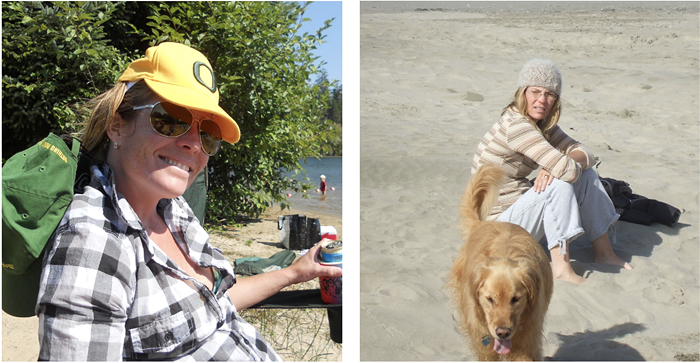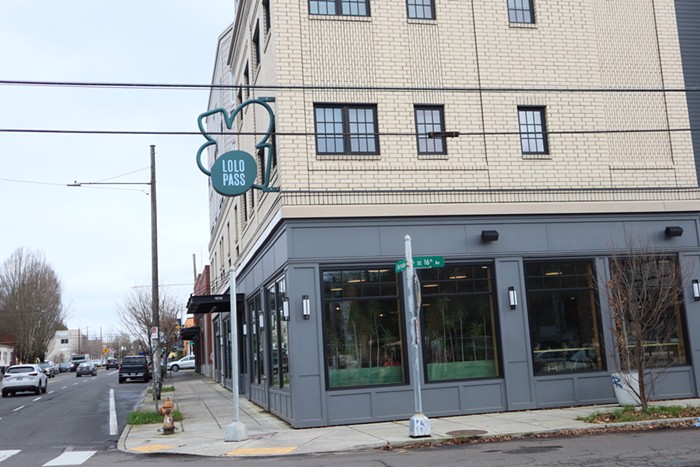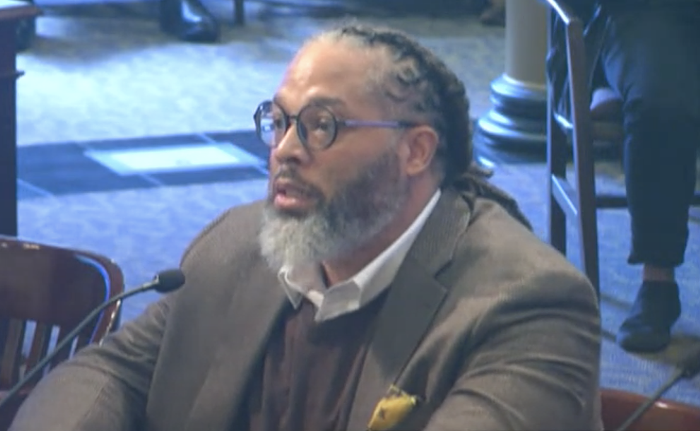High Rocks
On the Clackamas River, here is Oregon's most notorious swimming hole. Two years ago, three people drowned in less than 24 hours. Since then, lifeguards have been placed on duty--so far successfully preventing more deaths.
High Rocks draws throngs every summer because it's a deep, wide section of the river easily accessible from either Gladstone or Oregon City. Bordered by rocks ideal for sunbathing and climbing, the spot is dynamic. But a strong current, frigid water temperatures, an undercut bank and hidden underwater ledges are accidents waiting to happen.
High Rocks is also a harried site because of the roughnecks who often populate the swimming hole. But the appearance of lifeguards has also begun to change the site's demographic, as some of the "trouble" (read: cut-off shorts-wearing, beer guzzling hicks) have apparently moved upstream to Carver State Park. According to Larry Potter of Oregon City Parks, the Gladstone access point is slightly safer than the Oregon City side.
To get to this slightly safer side of High Rocks, head east on I-84, then south on I-205. Take the Gladstone Exit, # 11. Continue on 82nd. Drive through the signal, turn right at the stop sign on Columbia, left on 1st Street, and left again on Yale Ave. High Rocks is upstream of the bridge, and can be accessed by an asphalt path.
To get to the slightly more dangerous side of High Rocks, travel south on I-205 to Exit 10. Stay left, and follow signs to Park Place/Molalla. Turn left at Clackamas River Drive; river access is on the left about half a mile across the train trestle. (FYI: Crossing the train trestle is illegal, as is drinking in the park. But then again, there is no one patrolling the Oregon City side, which again, adds to the danger.)
Carver Park
Just upriver from High Rocks, the stretch of the Clackamas River at Carver Park is a popular and dangerous spot for tubing and swimming.
"It looks like calm water, but the fastest, most turbulent part of the river is just below the surface," says Mike, a river enthusiast who works at Next Adventure Outfitters.
Julie Reiner with Clackamas County Parks reiterates these concerns: "There have been many drownings over the years, and most have occurred when people have jumped off the Baker's Bridge and been sucked under the water."
To get to Carver Park, head east on 1-84, south on I-205, then take Exit 12 (Hwy 212) toward Mt. Hood. Veer right onto Highway 224. Go three miles into the two-store town of Carver. Turn right just before the Carver Hanger, cross the bridge and turn left at Springwater Road.
Glen Otto Community Park
Troutdale's Glen Otto Community Park on the Sandy River is a tremendously popular spot for swimming (last year it had over 33,000 visitors). But it also has a checkered past, averaging two drowning deaths per year until 1999, when lifeguards were added for the busy summer months. There have been no fatalities since--but don't think you're completely safe. Last summer alone lifeguards made 38 assists and six rescues.
Combine the Fort Lauderdale atmosphere--alcohol guzzling and poor judgment--with dangerous whirlpools adjacent to the beach and strong, hidden currents, and you have the perfect recipe for disaster.
Glen Otto Community Park is located at 1106 East Historic Columbia River Highway. Take I-84 East; take Exit 18. Head toward Lewis and Clark State Park/Oxbow Regional Park. Turn left on Crown Point Highway (which becomes East Columbia River Highway). Go to the east side of the park, which is bordered by the Sandy River.
Lewis and Clark State Park
Just last week a 29-year-old man drowned while trying to rescue his girlfriend. She was struggling to stay afloat in the strong current. He apparently didn't know how to swim, but thought he could be the hero.
"[The Sandy River] is deep, cold, and deceptively swift. It can just suck people under," said Kirk Chamberlain at Oregon State Parks. There isn't just one dangerous spot on the river--the danger spots are scattered like land mines.
To get to Lewis and Clark State Park, go east on 1-84. Take Exit 18 and head east. Follow the signs to Lewis and Clark State Park.
Punch Bowl
You can reach the cool water here by shimmying down a muddy rock bluff. Or, a quicker way would be to jump. Hanging over a beautiful waterfall, the bluff is about 80 feet above surface level. It takes maybe two or three seconds to fall (but feels a lot longer). Last summer, a friend jumped from the overhang and bruised his thigh. He told me that the next woman who jumped landed on her back. For several moments, she couldn't move her legs and had to be rescued. (She had put a hairline fracture in her spine.) When EMTs arrived, they said they're called to Punch Bowl a dozen times every summer.
A week earlier, the EMTs continued, a guy had jump spread-eagle from the rocks and landed on his nuts. The force pushed his testes into his body cavity. He didn't have health insurance so he refused their help and had friends carry him the two miles back to the parking lot.
Punch Bowl is reachable from the popular Eagle Creek hiking trail. From I-84, take Exit 41. Follow the meandering road to the parking lot. There are two paths. Take the one that goes directly away from the parking lot, toward the south.


















